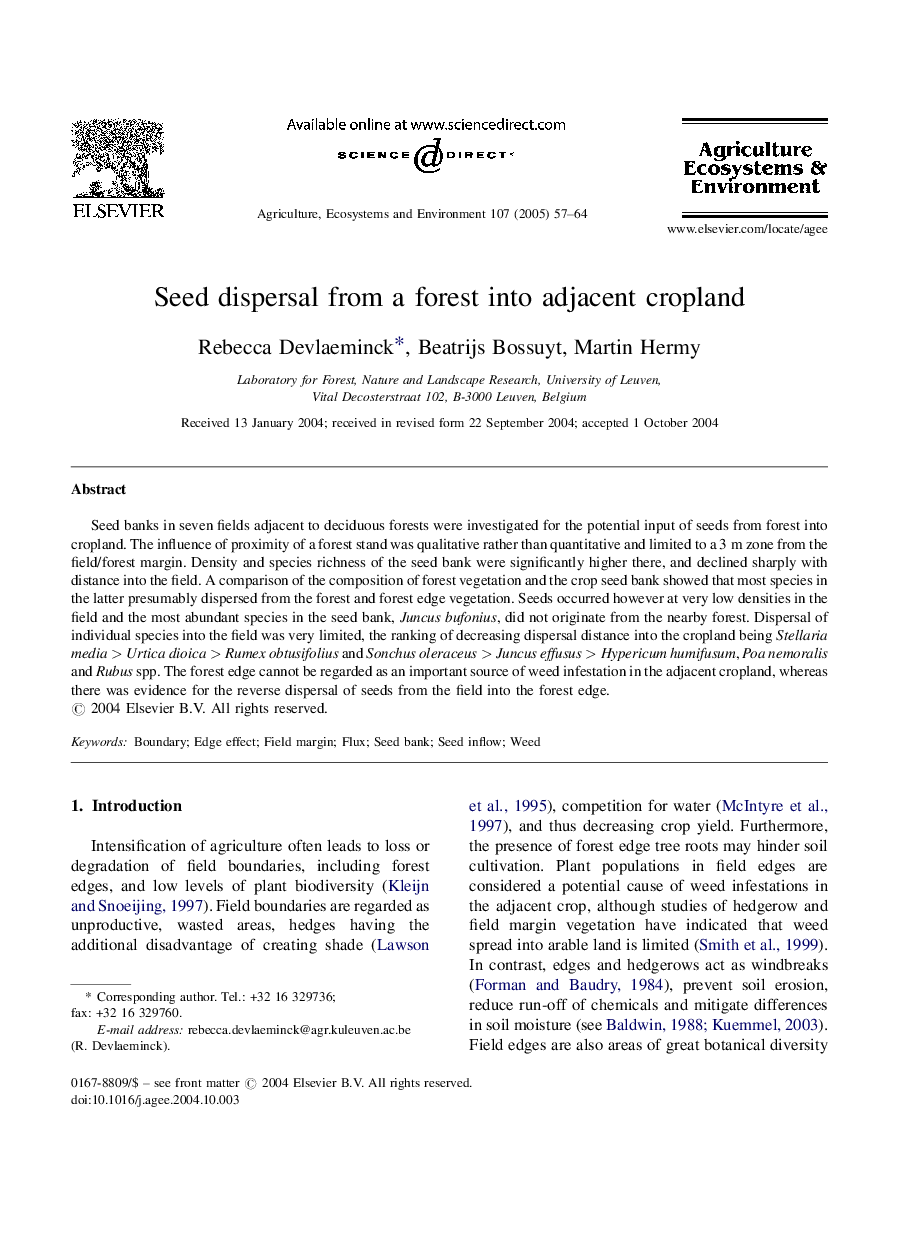| Article ID | Journal | Published Year | Pages | File Type |
|---|---|---|---|---|
| 8970937 | Agriculture, Ecosystems & Environment | 2005 | 8 Pages |
Abstract
Seed banks in seven fields adjacent to deciduous forests were investigated for the potential input of seeds from forest into cropland. The influence of proximity of a forest stand was qualitative rather than quantitative and limited to a 3 m zone from the field/forest margin. Density and species richness of the seed bank were significantly higher there, and declined sharply with distance into the field. A comparison of the composition of forest vegetation and the crop seed bank showed that most species in the latter presumably dispersed from the forest and forest edge vegetation. Seeds occurred however at very low densities in the field and the most abundant species in the seed bank, Juncus bufonius, did not originate from the nearby forest. Dispersal of individual species into the field was very limited, the ranking of decreasing dispersal distance into the cropland being Stellaria media > Urtica dioica > Rumex obtusifolius and Sonchus oleraceus > Juncus effusus > Hypericum humifusum, Poa nemoralis and Rubus spp. The forest edge cannot be regarded as an important source of weed infestation in the adjacent cropland, whereas there was evidence for the reverse dispersal of seeds from the field into the forest edge.
Related Topics
Life Sciences
Agricultural and Biological Sciences
Agronomy and Crop Science
Authors
Rebecca Devlaeminck, Beatrijs Bossuyt, Martin Hermy,
